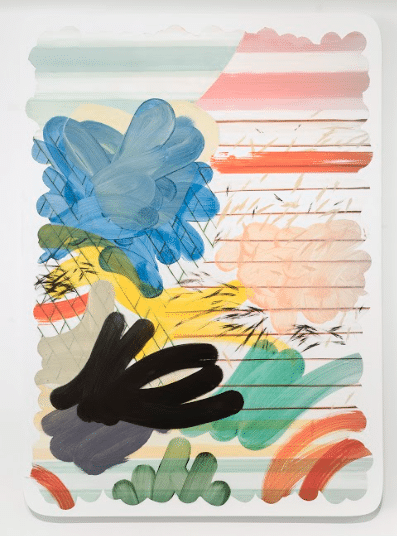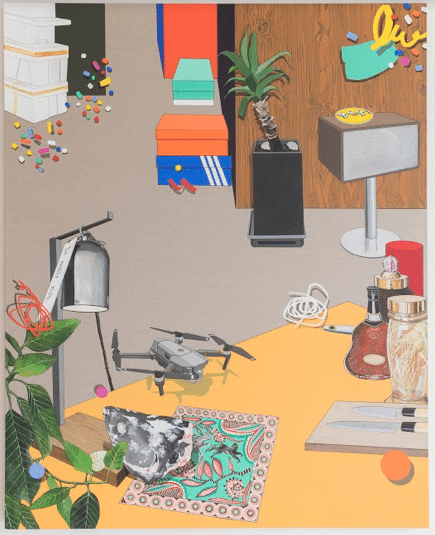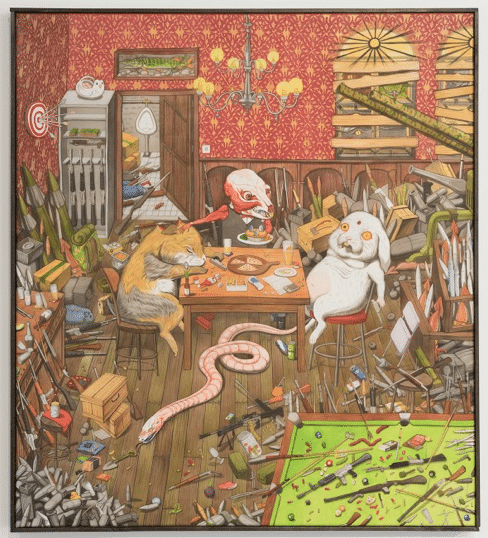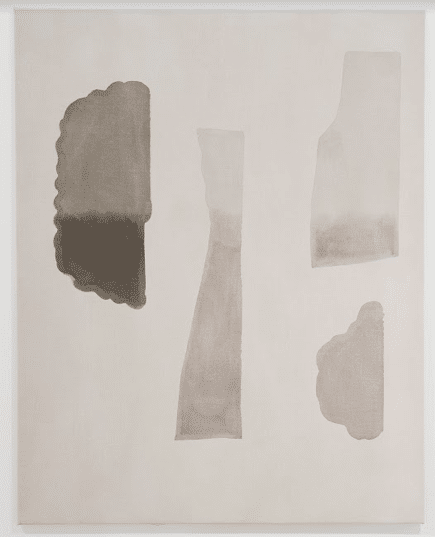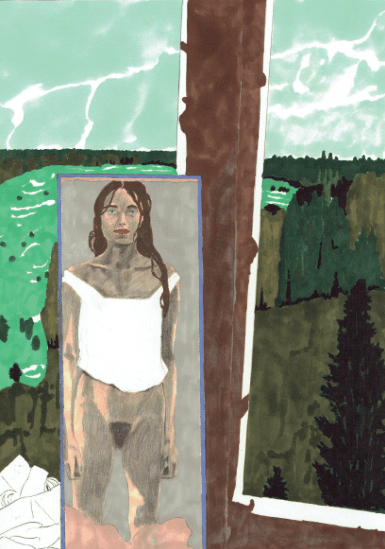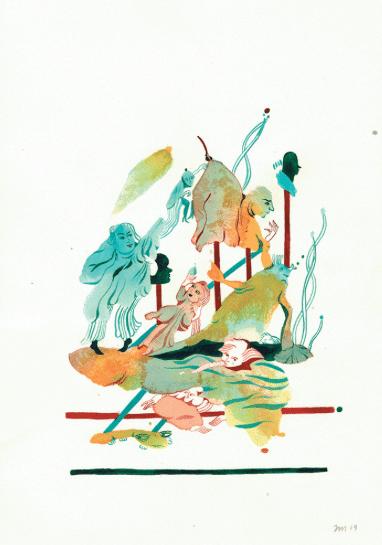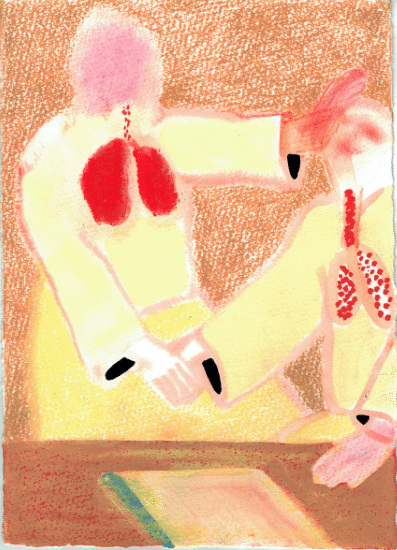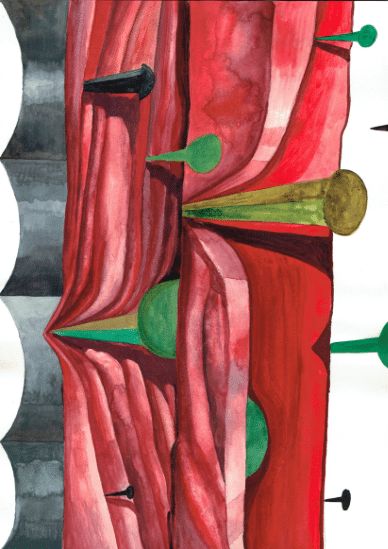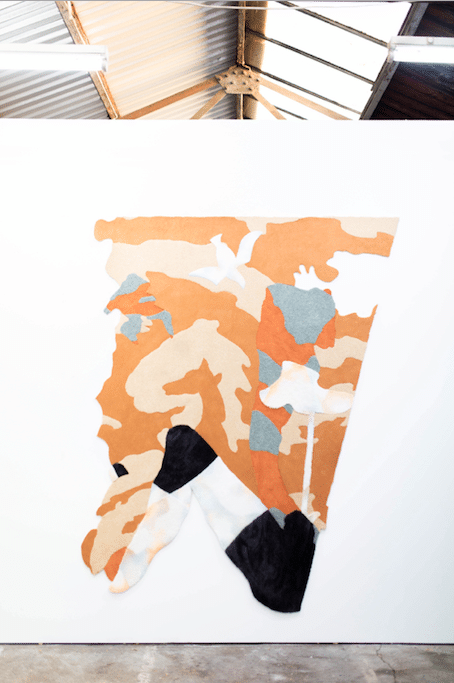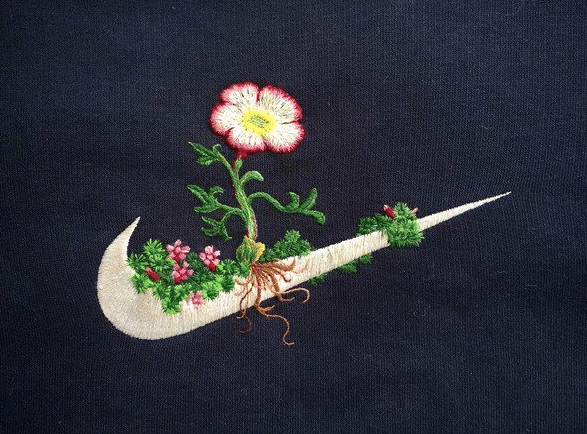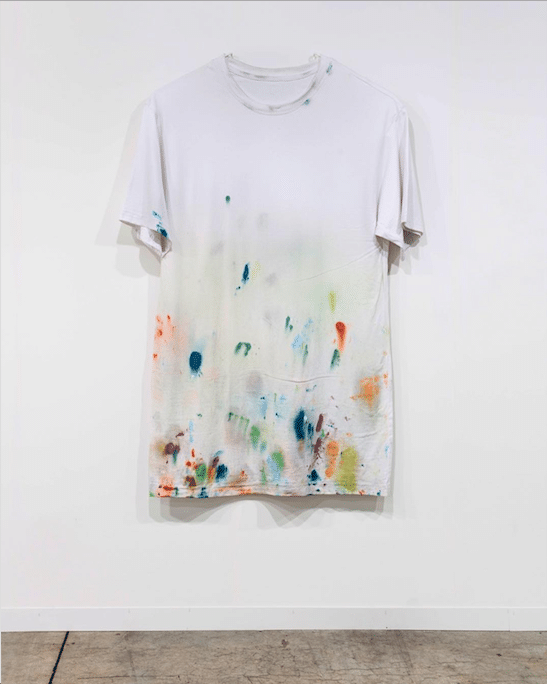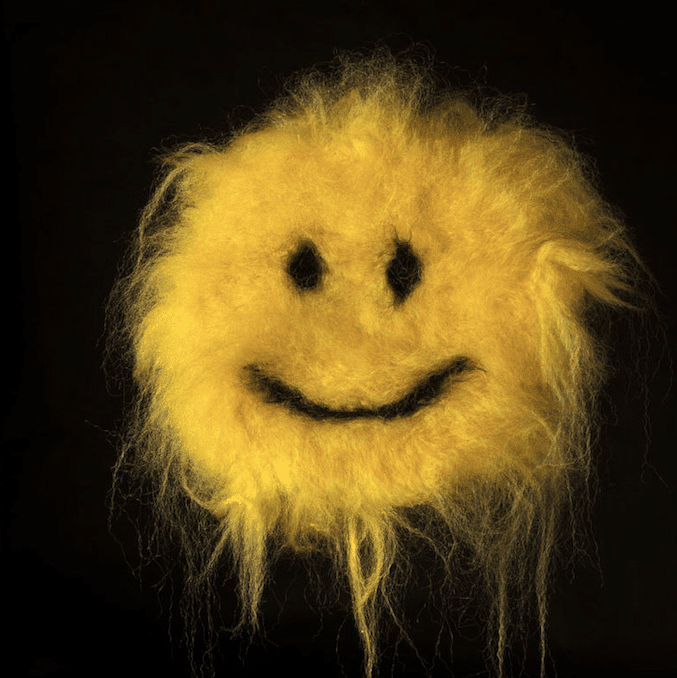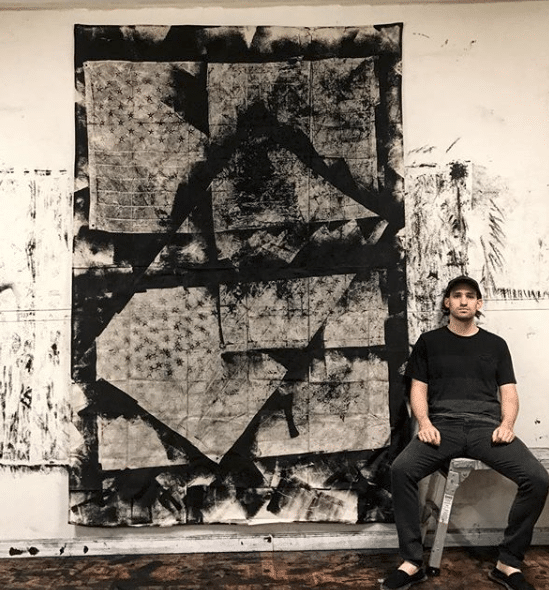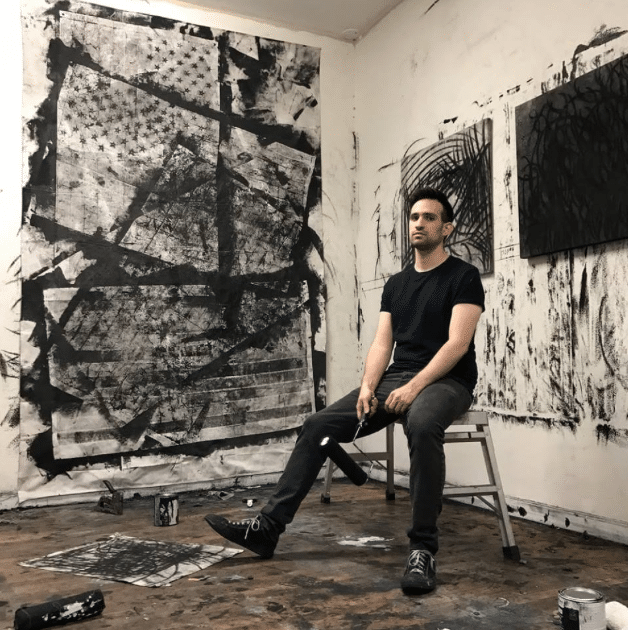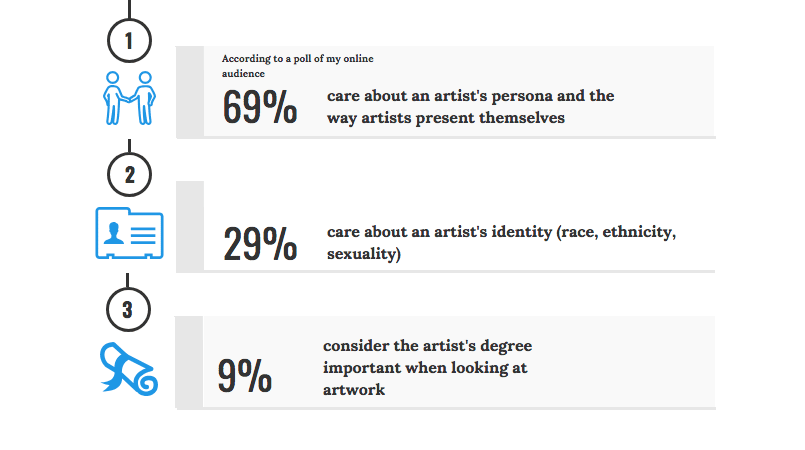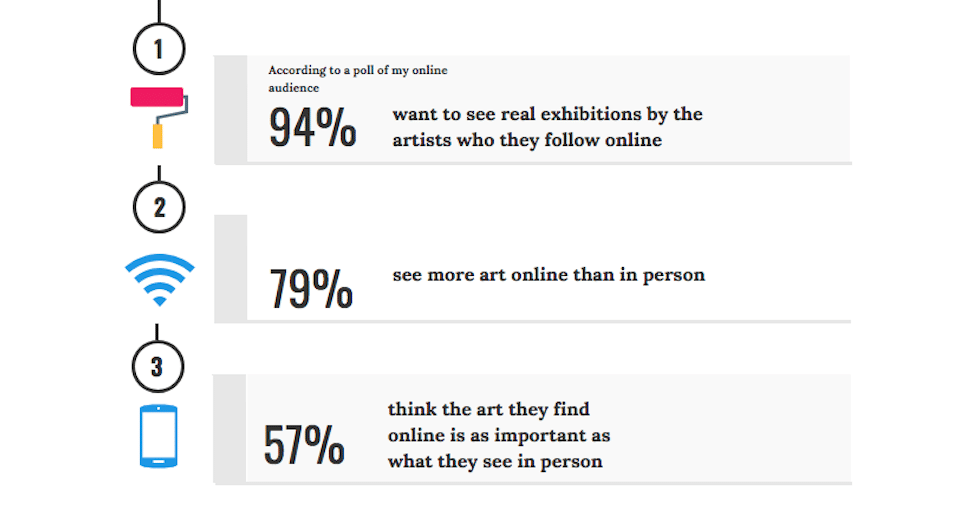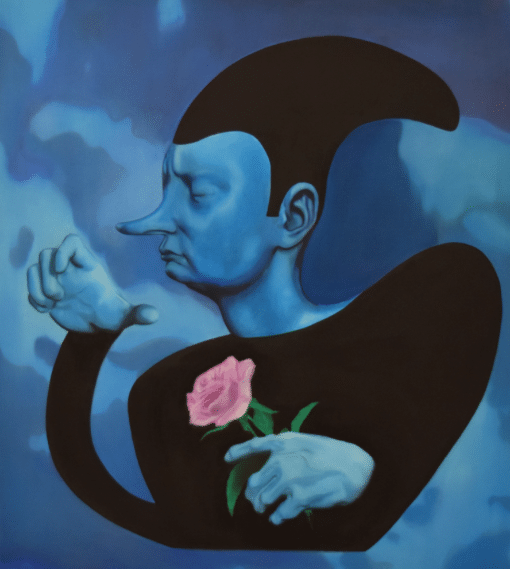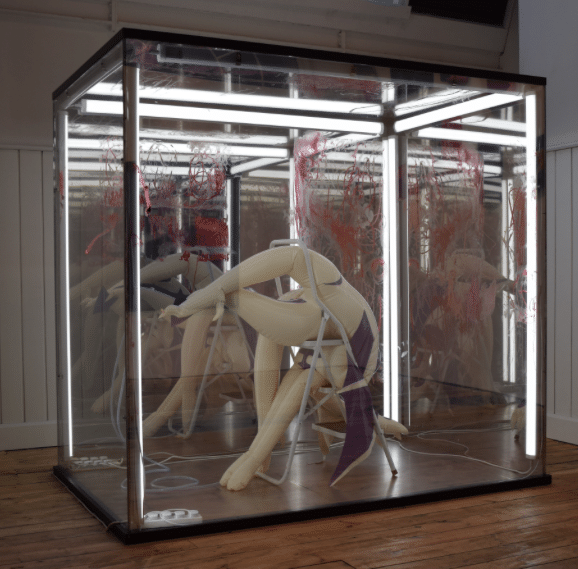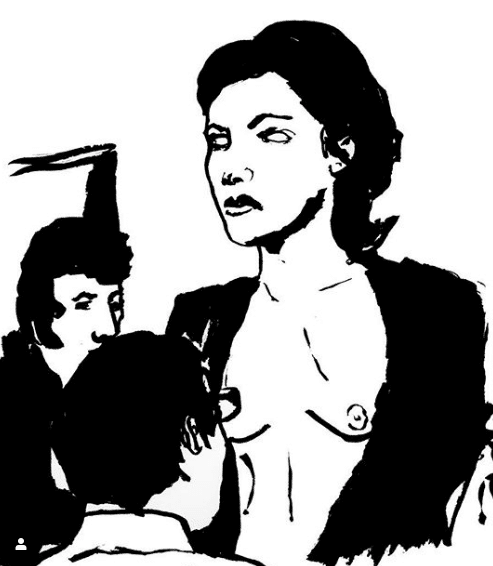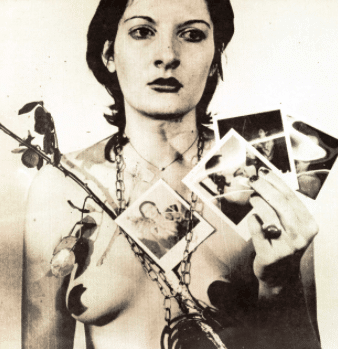Bas Jan Ader – Embracing The Tempest
Embracing The Tempest – Bas Jan Ader.
Words and images by Benjamin Murphy
On the ninth of July 1975, the 33 year old Dutch conceptual artist Bas Jan Ader set off from Chatam Mass on Cape Cod, in a 12.5 foot sailing boat entitled Ocean Wave. His plan was to catch the Gulf Stream, and take this tiny vessel across the harsh and unforgiving environment of the Atlantic ocean, landing in Falmouth, UK, around ten weeks later. This arduous journey was planned and undertaken as part of an artwork entitled In Search OF The Miraculous, which has now become his most well-known, and arresting work. The reason for this notoriety is that Ader never returned from this journey that became his magnum opus, and is presumed dead.
Some think that the journey simply hit disaster and failed, but some believe that Ader never planned to return, setting into motion an elaborate and irreversible chain of events that would ultimately lead to his own death. Suicide in the name of art.
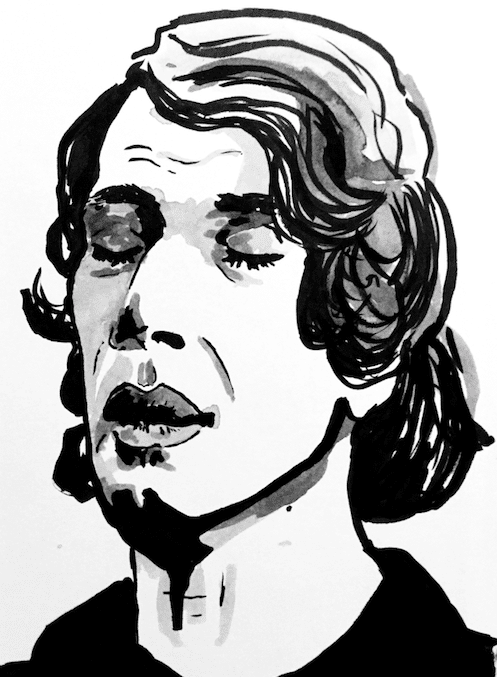
Portrait of Bas Jan Ader
Ader’s artistic oeuvre is modest, and many of his photographic and video works were completed in a single weekend. Most of these feature Ader himself, in somewhat comical, often slapstick interactions with his environment. Aside from ISOTM, his most well-known works are theFall series of videos – all of which feature the artist himself in an everyday location, falling, or occasionally dropping, to the floor. InBroken Fall 1 (Los Angeles), he sits in a chair atop the roof of his house for a few moments, before he rolls off the chair and down the roof to the ground.
Unlike Yves Klein’s 1960 Leap Into The Void, Ader actually fell from great heights – often with nothing to arrest his fall other than the ground beneath him.
He never allows us the opportunity to see him emerge from where he falls to, as the artworks are over as soon as the fall is done. They are works from which we shall never see him return, and in this way they are the natural precursor to ISOTM.
The long and difficult journey of ISOTM was one that had never been attempted in a vessel so small, and the environment was one that was at best dangerous, and at worst, murderous. Many solo sailors are troubled by loneliness as well as the fatiguing need to never truly sleep, remaining in a waking state most of the time so as to man the sails. The weather must have been hellish, and the tiny cruiser would have allowed salt water into every corner. Some go mad attempting a feat such as this, and others, like Ader, never return.
After six months, a Spanish fishing vessel found Ocean Waveoff the coast of Ireland, floating listlessly with all but it’s hull submerged in the sea, six months after he had set sail. They recovered the boat and took it back to Spain, where it was examined and found to be Ader’s, due to three forms of ID being found on board. They estimated it had been floating partially-submerged for three months, due to the barnacles attached as they were. This means that Ader had been at sea for three months, before the boat hit disaster. The washboards to which his lifeline were attached had been pulled up, and his lifejacket was never found. Both of these suggest some catastrophe that resulted in Ader falling into the water. Many other mysterious circumstances surround the discovery of the boat. The Spanish authorities claimed that an explosion had caused the capsizing of the vessel, but when pressed admitted that there were no scorch marks anywhere within the boat. When Erik Ader asked to examine the boat for himself he was informed that it had been stolen. It has perhaps been refurbished, and is now serving some unknowing family as a pleasure cruiser.
This journey was the second part of an intended triptych entitled In Search Of The Miraculous, the first part of which was an exhibition of photographs in Los Angeles. The photographs were accompanied by a choir singing sea shanties, the lyrics of which spoke of an insatiable longing to be out at sea, despite the risks, embracing the tempest.
ISOTM is an exploration of this harsh environment, experienced only by one man – the artist. The artwork then, exists for us not in the physical, quantifiable world, but somewhere in the abstract. It exists for us only in our imagination, having no experience of the actual event taking place, save for a few photographs of the launch of Ocean Wave, and a few tragic relics that were salvaged unknowingly by a Spanish fishing vessel after the fact. We are left to imagine the conditions out at sea, and cannot fathom the complexity and extremity of such an experience, let alone try to relate to one in such a scenario. The loneliness must have been deafening. This solitary journey was by far Ader’s most profound and affecting work, and yet it is essentially unexperiencable by anyone other than Ader himself. We can only theorise, knowing only small details with which to attempt (futilely) to construct a larger picture of the work. It is a piece that we know little about, and it is these gaps in our knowledge of the work that makes it so powerful. It’s power lies in the negative space, in assumption and myth, rather than objective experience. His work is never strictly performance, for it is seen by the majority in retrospect, via photographs or video. ISOTM is one-step further removed from performance, (although it still has a performative quality), for it is more ethereal, and exists not in the real world, but within the minds of the ‘viewer’ only.
Like Seedbedby Vito Acconci or White Light, White Heat by Chris Burden, the public knows that what they are encountering is the private moments of a solitary individual, but although they know roughly what occurred, they don’t know the specifics of each experience. As these private moments are both private and on display, what happens is very interesting. There are ultimately two experiences, that experienced by the solitary artist, whilst they are being experienced by the viewer; and the viewer’s experience of being aware of, but unable to see, this hidden, solitary artist, experiencing his solitude. The physical presence of these artists is diminished in one way, but by this diminution, is enlarged greatly.
This Sisyphean struggle attempted by Ader in the name of art is arresting, for Ader has burdened himself with this almost-impossible task. It is as if Icarus flew too close to the sun on purpose, just to see what would happen once his wax wings melted away to nothing – not out of hubris, but more-excitingly, out of curiosity. It is these existential questions that give his work a large part of its power.

In Search Of The Miraculous
Ader explains his interaction with the environment as if gravity made itself master over him, but this assumes that Ader had no choice but to fall from the roof or branch, for gravity was in control. This ignores the fact that Ader himself decided to climb up to these places so as to allow gravity to do its job. Ader allowedgravity to make itself master over him, and through this subjugation, Ader displays his absolute mastery, and absolute control. Only through his relinquishing of power was the environment able to display its strength, and so through giving away of his power, he displays the true strength of that power. Gravity is not his master after all, for he only lets it out of its cage for a moment. Much of his work is seen as an abandonment of free will, an exercise in determinism that uses his body as its apparatus, but it is the strength of his resolve when making such bold and seemingly reckless choices, that displays his power, and his absolute control over fate.
It would be erroneous (and yet very common) to assume that any of Ader’s works are explorations of failure, as in all of the works he is enacting processes that have only one possible result. In the Fallvideos, it is the fall itself that is the salient component of the works, and these works couldn’t exist in the same way without this fall that is prognosticated in the title. The subject of these works is the falling, or occasionally dropping, of an object or body, due to: the finite strength of the human body, gravity, and most importantly, the artist’s intent.
Ader created these works knowing that his strength was finite, and thus would eventually give out, and it was this that he explored so expertly. The only possible effect of his hanging from a tree inBroken Fall (Organic)for example, is that his arms would give way, his grip would loosen, and he would fall into the water below. In fact, he climbed up into this tree to test his resolve, but ultimately, to fall into the water. This work had only two outcomes, either he falls, or he hoists himself back up and climbs down – the latter of which would have resulted in the actual failure of the work, for the Fall in the title would have been absent. The same could be said, albeit in a slightly reconfigured way, for anyof the Fall series of works. Even in works that didn’t test the strength of the human body in the same way as Broken Fall (Organic), such as Fall 1 (Los Angeles), and Fall 2 (Amsterdam), the fall was both the medium, and the subject matter. In these, it is a direct result of a seemingly-irrational movement made by Ader that initiates the fall, and it is an action that is made intentionally.
This work (and indeed much of his other work also) is often read as a failure, as if he failed to succeed. This lazy reading of course neglects a second option, that he succeededat failure. This failure is not a true failure though of course (for to succeed at failure is an oxymoron), but that the failure is not a frustration, but the natural, and intended outcome of the work. The work could not exist without this ‘failure’, and as such, the word failure is indeed a misleading misnomer. Failure is not at all present within his works, as events proceed exactly as he intends them.
ISOTM is similar, in that it is often read as an abandonment of oneself to nature, the wilful neglect of one’s responsibility towards themself to mitigate danger, removing themself from any scenario that could cause them harm. This work reads as if Ader is neglecting himself, allowing fate to take its course. This is a slightly remiss reading though however, as through his very decision to attempt this journey, knowing full well the hazards such a feat would present, Ader is taking control of his fate in a very direct way – similar to his acceptance of his fallibility in the Fall series. In fact, the sheer gravitas of his decision proves that it is one that requires much deliberation, and indeed Ader planned his trip for months ahead of time. By his ownership of his own destiny, however dangerous, he has wrest back control from the forces of nature and the environment.
The particular environment in which, and with which, he chose to create this work was more than just a setting for an event, it was in part at least, his collaborator. He allowed the environment in which he was journeying, a part of the creative power, and the sea enacted its will upon Ader. This creative act was performed by the sea, but allowed by Ader, as it was his vision that decided to relinquish some power to another force.
It is documented that before ISOTM Ader was concerned, if not worried, about the relevance and significance of his work. Friends and colleagues at UC Irvine reported how he seemed absent, and some spoke of their last conversations as if Ader was saying goodbye forever. Perhaps it was this that made him feel as if he had to make this bold statement in his work, and that the potential power of this work made it worth the risk. The show itself seemed like it was a lament, or a melancholic goodbye.
It is very tempting to romanticise this tragedy, ignoring the facts so as to paint a better legend. There are irresistible parallels between the cult of Ader and the cult of other, similar lost heroes who died tragically, much to young. It is tempting to claim ISOTM as a wilful act of suicide, but that is to slightly misrepresent the facts in order to write the better legend. In fact, Ader made plans for his life and work post-ISOTM, that would have been asinine if he never planned to return. There are a lot of conflicting elements that surround this story however, like the discovery of The Strange Last Voyage of Donald Crowhurstin his locker, which details the story of another solo sailor lost at sea in mysterious circumstances.
Ader did discuss (and dismiss) the possibility that this artwork was in fact an elaborate and extravagant suicide. If we take him at his word, then why did he bring it up ‘often’, and to multiple people including his wife Mary Sue, and Tony DeLap? Another artist represented by Claire Copley Gallery stated that the last time she spoke to Ader on the phone, it sounded like he was saying goodbye forever. All of these conflicting occurrences only serve to heighten the mystique surrounding the work, and perhaps, that was Ader’s intent.
It would be easy, and somewhat romantic, to ascribe destructive and tragic motives to his creation of this work, but it would be to intentionally disregard the other evidence that suggests he spent a lot of time trying to make sure that the journey was a success. He spent months having his boat modified for the journey by a shipyard, adding reinforced fiberglass in areas. He also wrote multiple times to his galleries to request that money he was owed was paid in time for his return, and he arranged for his classes at UC Irvine to be covered only until he was expected back. The dutch performers who were to sing the sea shanties at his exhibition in Amsterdam had already begun practicing. For all of these reasons, we must become content with never knowing the truth, which in its own beautiful ambiguity, seems fitting.
Despite all of this, he ultimately knew, and accepted the fact that he might never return, and he made his peace with it. It was a welcome risk for the sake of something bigger.
He left on a quest from which he may never return, but lost he is not.
The romance is not in the dying, but in the mastering of the elements by submitting to them, by relinquishing power and allowing one’s environment to take the reigns, come what may.
Originally published in AfterNyne Magazine
www.benjaminmurphy.info
For more by Benjamin Murphy, see his article about the exploitative works of Santiago Sierra here

